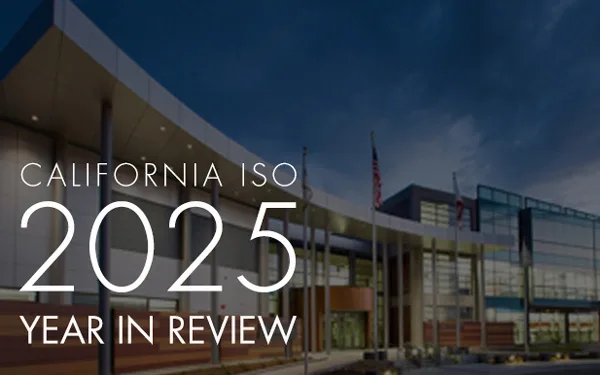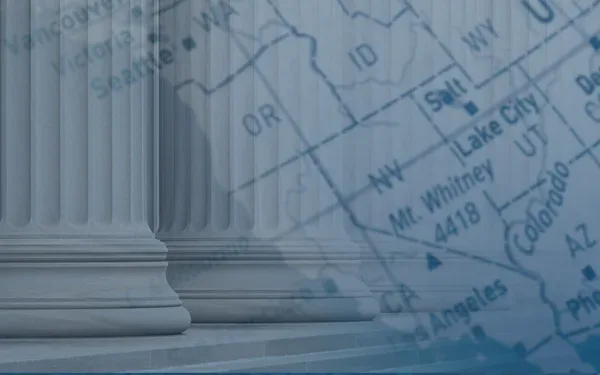Good news on the transmission front

In my role as the California Independent System Operator’s vice president for Transmission Planning and Infrastructure Development, Thursday, November 4 was a very good day. That’s when we received welcome news that the California Public Utilities Commission (CPUC) had unanimously approved a new high-voltage transmission project that will move electricity between Central Arizona and Southern California.
Adding new transmission capacity to the electrical grid is no easy proposition. By their very nature, these complex projects require considerable time to plan, analyze, locate, finance and build. The projects must, of course, also undergo rigorous environmental review. And for a new transmission project to make it across the finish line, it takes true collaboration between utilities, investors, developers, stakeholders, regulators and a number of state and federal governmental agencies.
After about a decade of work, the roughly $400 million Ten West Link Transmission Line Project is now expected to be operational in 2023. That is good news for utility customers in California and Arizona, and good news for California and other states working to achieve their energy policy goals. It almost goes without saying, after all, that we need ample supplies of clean, renewable energy to decarbonize the electrical grid and fight back against climate change. But without the transmission capacity to move that clean power so it can efficiently serve the people, companies and organizations that depend on it, we will not have the safe, reliable, and environmentally friendly power system all of us need.
Like all transmission projects, this one has been in the works for quite some time. The Ten West Link Transmission Line Project, then named the Delaney-Colorado River Transmission Line, was included by the CAISO as an economic transmission solution in its 2013-2014 transmission planning process. Back then and now, we recognized the energy cost savings and capacity benefits for Californians that would be realized by reinforcing this critical transmission path to Arizona.
In July 2015, the CAISO selected DCR Transmission (DCRT), an affiliate of Starwood Energy Group Global, a company that specializes in energy infrastructure investments, as the approved project sponsor for Ten West. DCRT’s charge was to develop, permit, design, finance, build, own, operate and maintain the project, having been chosen by the CAISO through a competitive solicitation. The Approved Project Sponsor Agreement between the CAISO and DCRT was signed the following December.
The recent action taken by the CPUC grants DCRT the necessary Certificate of Public Convenience and Necessity to now move forward and build the project, subject to environmental review. The transmission project will run between the Colorado River 500 KV substation in Blythe, CA. that is owned by Southern California Edison Company, and the Delaney 500 KV substation in Tonopah, AZ, owned by Arizona Public Services Company.
As the CPUC noted in its unanimously approved decision, the new 500 kilovolt (KV) line will span approximately 103.5 miles in Arizona and 21.5 miles in California, with the proposed route largely following the existing Devers-Palo Verde (DPV) 500 kV transmission line. That means Ten West Link can utilize the established utility corridor, crossing over land that is already owned by the federal government, including acreage managed by the Bureau of Land Management, Bureau of Reclamation and the United States Army.
The new line will have the capacity of 3,200 megawatts, providing a significant reliability boost to the power system between Arizona and Southern California. For context, one MW of electricity can power about 750 to 1,000 homes, so this is a very significant amount of transmission capacity that will be added to the grid.
Not having to obtain costly new rights-of-way is a major plus. And because Ten West parallels the existing Palo Verde-Colorado River 500 KV line, it will reduce the risk of losing transmission capacity should that original line be out of commission for any reason.
The Ten West Link will also provide access for any new renewable generation built in Arizona and connect directly to the CAISO market. This will provide an additional 1,000 MW of deliverability for resources seeking to provide capacity under the California Resource Adequacy program. That’s a technical way of saying the new line will provide a much-needed and reliable source of clean energy we can count on once the project is operational because that new power can be contractually obligated to be available to the CAISO grid.
In announcing the news on its own website this week, Starwood Energy’s CEO, Himanshu Saxena, acknowledged the long and complex journey such projects make before coming to fruition. “Transmission projects are challenging to accomplish,” he noted. “This milestone approval by the CPUC builds on more than five years of collaborative effort with individuals, businesses, State and Federal agencies, and other stakeholders.”
Getting to this milestone has been a long haul. The CAISO will continue to do everything it can to expedite approval and construction of all the additional transmission capacity that California and our neighboring states in the West need going forward, and we are very happy to see this important infrastructure project move a big step closer to fruition.


